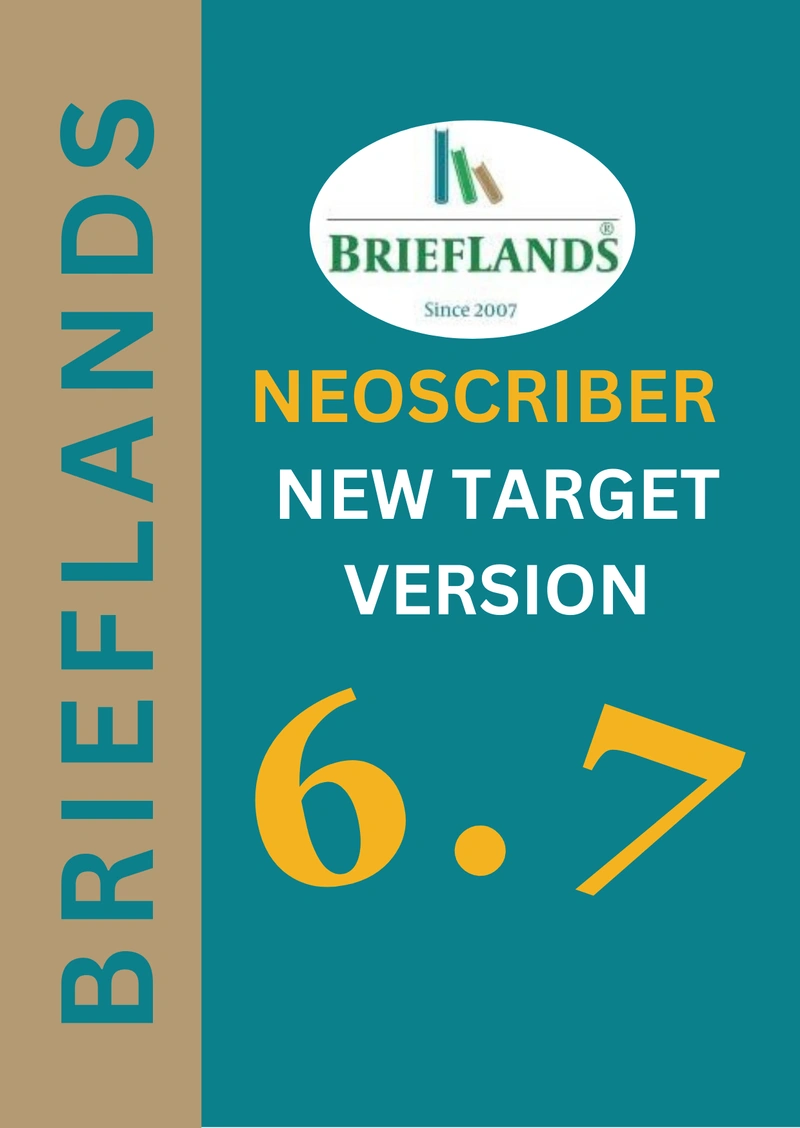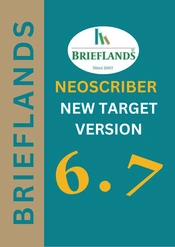As part of our commitment to continuously innovate and improve our services, we have been busy behind the scenes, refining NeoScriber's interface, improving its performance, and adding exciting new features designed to make your publishing journey more efficient and enjoyable. From reviewer and AE registration, and Crossref deposit checks, to indexing reports, NeoScriber 6.7, our cutting-edge journals management system, is packed with powerful features that make publishing a breeze. Join us as we take a tour of all that's new and improved in NeoScriber 6.7, and discover how each feature can benefit you. For both seasoned users and those new to our software, this comprehensive guide will help you make the most of our latest update to our Brieflands Journals Publications platform.
Details of Release Updates in NeoScriber 6.7:
Reviewer and AE Registration Online Form:
Registering reviewers and associate editors (AEs) is now simplified and accelerated with our new online form. Accessible from anywhere, anytime, this streamlined process not only saves time but also enhances efficiency and minimizes errors. With our centralized online form, all information can be effortlessly inputted and managed in one location. Keep track of each reviewer or AE's status, facilitating smoother management of your reviewer pool and review process. Our user-friendly and intuitive form ensures easy completion, reducing the likelihood of errors and ensuring you gather all necessary information from reviewers and AEs. Experience a more streamlined review process and simplify your workload with this new feature.
In the dynamic landscape of academic publishing, having an online portal that caters to the specific needs of reviewers and associate editors is crucial. At Brieflands, we've crafted what we believe to be the best online portal within our journal management system, designed to streamline and enrich the peer review process. Our portal provides an intuitive, user-friendly interface that allows reviewers and associate editors to manage their tasks efficiently, from manuscript evaluation to communication with authors and the editorial team. We've integrated tools that facilitate a thorough review, enable easy access to manuscripts, and offer seamless collaboration features. By prioritizing the convenience and effectiveness of our reviewers and associate editors, Brieflands ensures that the scholarly review process is not only rigorous and fair but also a rewarding experience for all participants. This dedication to excellence in our online portal reflects our commitment to supporting the scholarly community and enhancing the quality of academic publishing.
Enhance Crossref Deposit Verification Process:
In the realm of scholarly publishing, Crossref holds significant importance by facilitating the creation of digital object identifiers (DOIs) – unique alphanumeric strings assigned to digital objects for seamless linking and citation. With NeoScriber 6.7, we've streamlined the process of verifying Crossref deposits. Our latest feature enables swift and efficient checks of all Crossref deposits, ensuring accurate registration of DOIs. This enhancement offers peace of mind and time savings, allowing you to concentrate on other essential tasks while simplifying a critical aspect of the publishing workflow.
Incorporate Article Indexing Links into Our Manuscript Information:
Incorporating indexing links into our manuscript information is a pivotal step in optimizing the publishing process. Indexing serves as a cornerstone for enhancing article visibility, facilitating easier access for researchers and scholars. With NeoScriber 6.7, our latest advancement simplifies this process further. Our innovative feature enables seamless importation of indexing links directly into our manuscript information interface, ensuring efficient management and accessibility. This functionality not only saves time but also minimizes errors associated with manual entry. Whether you're an author aiming to amplify the reach of your work or a publisher striving to streamline indexing procedures, this feature promises to revolutionize your publishing experience.
Indexing report of an article:
This new feature is specifically designed to improve the manuscript management process during peer review within our journal management system. With this addition, authors and editors will have access to comprehensive indexing reports for each article, offering valuable insights into its visibility and impact across various indexing databases. By utilizing these reports, authors can assess the reach of their work, while editors can ensure articles meet indexing requirements. This addition streamlines the peer review process, enabling users to make well-informed decisions and enhance the visibility of their scholarly publications.
Applying the Repository Pattern for Efficient Source Indexing:
This groundbreaking feature is tailored to streamline the process of managing manuscripts with unparalleled efficiency. By implementing the repository pattern, NeoScriber enables seamless indexing of sources, ensuring that valuable information is organized and accessible when needed. This innovative approach optimizes the manuscript management workflow, allowing users to efficiently track and manage sources during the publication process. Experience enhanced efficiency and organization in manuscript management with NeoScriber's latest feature.
Screening Results transform:
The "Screening Results Transform" introduces a pioneering approach to incorporating article indexing links into manuscript information. It tackles the challenge of efficiently extracting pertinent data from extensive scientific literature. Utilizing advanced techniques in machine learning and natural language processing, the Screening Results Transform autonomously identifies and extracts crucial details from scientific articles, including article titles, authors, keywords, publication dates, and abstracts.
This extracted information forms a structured representation of the scientific literature, serving various purposes such as literature reviews, meta-analyses, bibliometrics, and knowledge discovery. As a powerful tool, the Screening Results Transform enhances researchers' ability to manage and analyze scientific literature effectively and efficiently.
Release updates:
- Details of Release Updates in NeoScriber 6.3
- Details of Release Updates in NeoScriber 6.4
- Details of Release Updates in NeoScriber 6.5
- Details of Release Updates in NeoScriber 6.6
- Details of Release Updates in NeoScriber 6.8
- Details of Release Updates in NeoScriber 6.9
- Details of Release Updates in NeoScriber 6.10
- Details of Release Updates in NeoScriber 6.11
- Details of Release Updates in NeoScriber 6.12
- Details of Release Updates in NeoScriber 6.13
- Details of Release Updates in NeoScriber 6.14
- Details of Release Updates in NeoScriber 6.15
- Details of Release Updates in NeoScriber 6.16
- Details of Release Updates in NeoScriber 6.17
- Details of Release Updates in NeoScriber 6.18
- Details of Release Updates in NeoScriber 6.19
